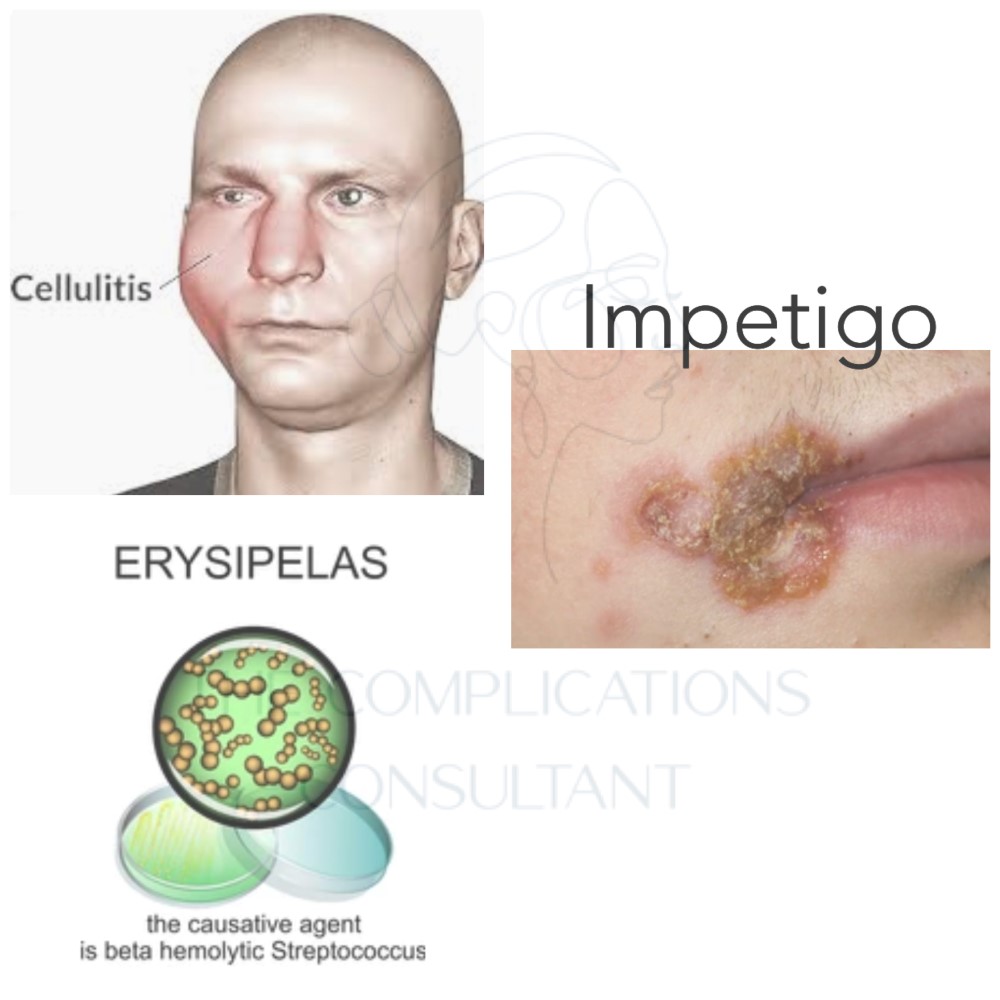Types of skin infection
As there are different layers of the skin, it stands to reason that infection of each may not always be the same, even if the causative bacteria is. Due to this conservative diagnosis and treatment of an infection may not always be possible, as the characteristics of the infection can differ and be multiple.
In example on the top layer of the skin an infection can present as impetigo, however lower into the skin layers, this would require non-invasive topical antibiotic cream and the need for precise diagnosis as systemic antibiotics wouldn’t help in resolving the infection.
ERYSIPELAS affects the next layer of skin down, the superficial epidermis. This is a more severe reaction and needs immediate treatment and possibly IV antibiotics, it can spread rapidly.
CELLULITIS is a deeper subcutaneous infection. Its edges are less defined, and it is advisable, if the patient is not with you when they complain of a suspected case of this infection that they are advised to draw a line around the area of redness to the skin, this enables us to tell if it has spread and worsened in the time it takes us to assess clinically.

NECROTISING FASCITIS involves all layers of the skin and can travel deeper into the tissues to involve muscle also. It is associated with tissue necrosis. Muscular involvement however is usually related to large traumas to the limbs for example and are unheard of in relation to aesthetic treatments, nonetheless it is good practice to be aware of all infections related to the skin to be a well-rounded clinician. Treatment would require urgent referral to hospital, for IV antibiotics.
Staphylococcus auras is the most common cause for aesthetic related skin infections. It carries a high risk of resistance, early diagnosis is helpful.
RISK FACTORS
- Generally, the risk is low
- Patient specific such as current, active infection before procedure
- Elderly patients
- Immunocompromised; medication related such as steroids or immune modulators
- Chrone’s disease, kidney disease, chronic liver failure
DIAGNOSIS
- Allergic reaction, post procedural inflammation and infection can all clinically look the same
- Erythema, oedema, warmth, pain, tenderness
- Timing and qualitative factors that will be key in aiding differentiation of above
- Culture always best practice wherever possible, especially if first line treatment doesn’t work. Can be achieved by working with the patients GP


